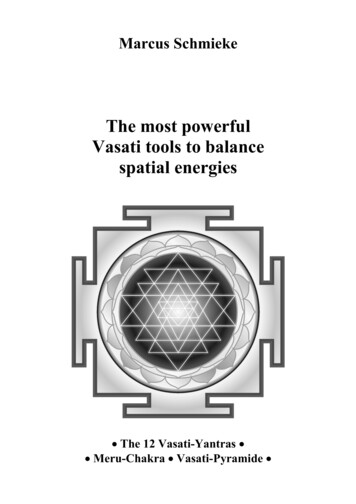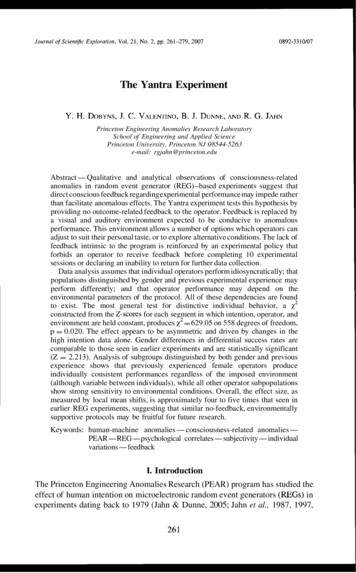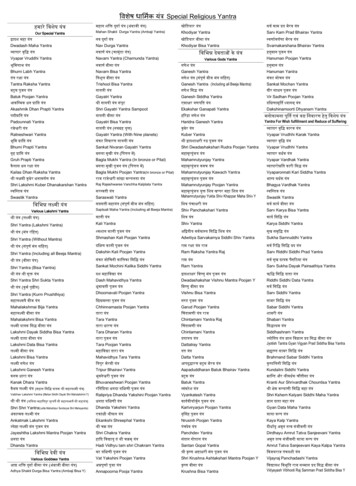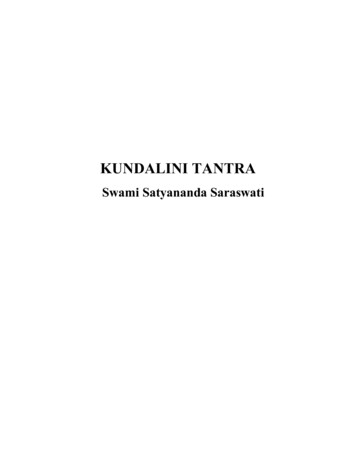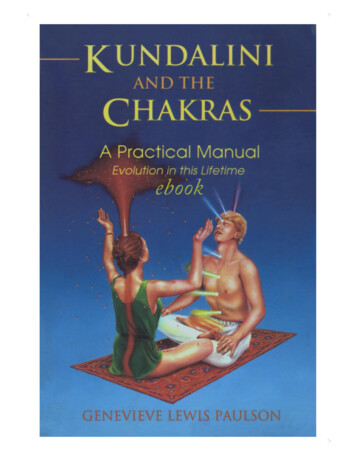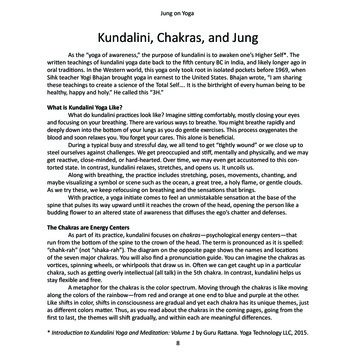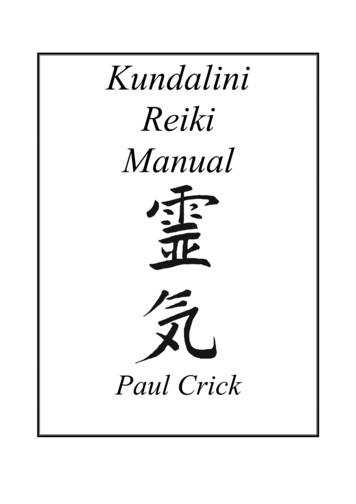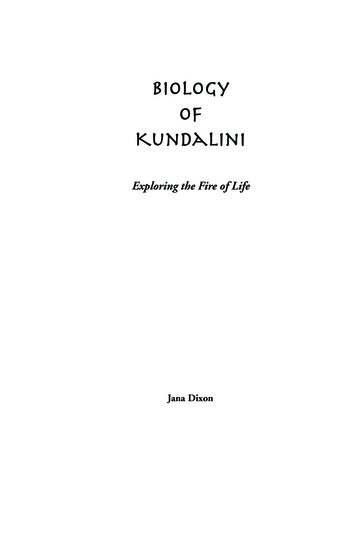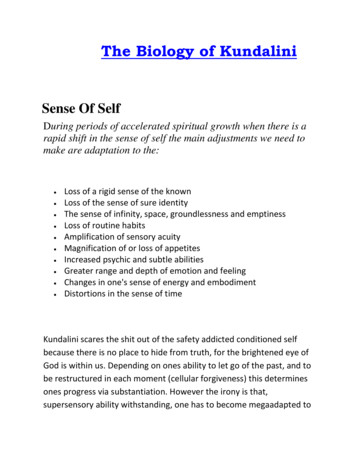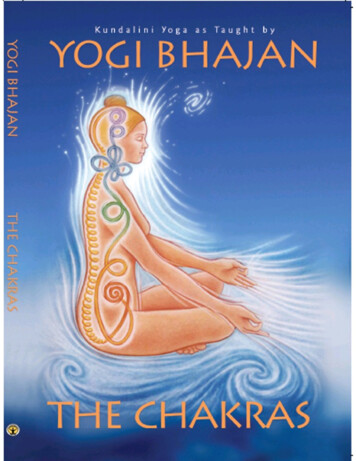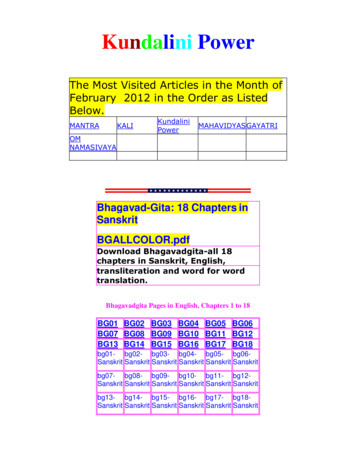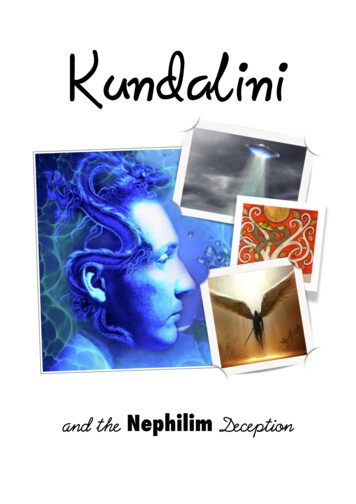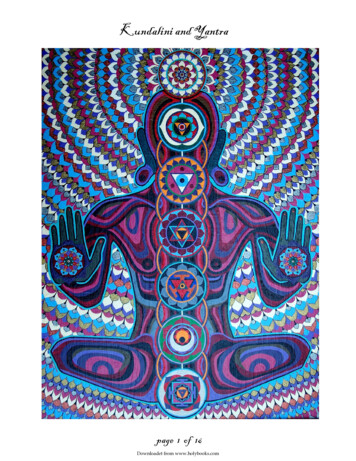
Transcription
Kundalini and Yantrapage 1 of 16Downloadet from www.holybooks.com
Kundalini and YantraA Brief Introduction for Inquiring MindsWritten and Illustrated by David Edwin HillCopyright 2006 by David Edwin HillSimpsonville, South CarolinaPlatycryptus@yahoo.compage 2 of 16Downloadet from www.holybooks.com
IntroductionYou may have seen Tibetan mandalas, painstakingly drawn with colored sand in the utmost detail, thenutterly destroyed. Did this act of destruction suggest impermanence, or did the mystical symbolssuggest something far more enduring?There are many texts that you can read on the subject of mandalas, yantra, and other mystical symbols.The American Indians had them. Jung thought that they were profound archetypes. Perhaps they areassociated with deep mysteries rooted in a collective unconscious mind. Perhaps they are like lampscalling out to us through the wilderness of confusing events that color our lives. Perhaps they representsomething that we have seen before, some place that we have been.Do you seek a guru, someone to lead you? There are many interpreters of magic symbols. Everyreligion has them. If you search, you can find holy crosses, divine wheels, and in a quiet pool ofbottomless water that only you can visit, a perfect lotus of eight-fold symmetry.One thing that all mandalas have in common is movement. You can move in toward the center, in thedirection of the infinite microcosm. You can move outward, in the direction of the infinite macrocosm.Both infinities are equal.If you understand General Relativity, then you may already have an understanding of the non-Euclideangeometries that are suggested by this inward and outward movement. For this text, we will focus onthe practical use of this movement.page 3 of 16Downloadet from www.holybooks.com
ReligionReligions are organizations. If they do not perpetuate themselves, they disappear. Surviving religionsare the ones that perpetuated themselves. Religions thrive on reverence for culture, even thoughculture is impermanent. This guide is not about religion.Because kundalini and yantra are caught up in the historic practice of religion, you can find manycultural trappings. Mostly, kundalini and yantra are either revered or cursed, but seldom understood.One of the reasons for this is that the truth that can be spoken is very small. So small, you can give itaway. So small, the receiver may not even see the gift. So small, you can even find it by yourself.The truth that can be spoken is very small, not enough to fill even a small book. But there is no end toseeking.Here we will celebrate the mystery of unfathomable form and infinite being. We will briefly discussthe self and the the non-self, the microcosm and the macrocosm. Mostly we will introduce a simplepractice. There is no dogma to advance here, no organizational agenda. There is only personaldiscovery.page 4 of 16Downloadet from www.holybooks.com
KundaliniYou are conscious mind, restless and moving from one point of attention to another. Pleasure callson you to follow. Pain drives you to run away.Pleasure and pain are the voices of a human body, one that developed from other bodies via aphysical process of reproduction through many lineages, over many ages. Pain says, stop. Pleasuresays, go. Your relationship to this body is very close and intimate. You may even think that you arethis body. The body calls to you, even coerces you, because your will or desire makes thingshappen. You are the mediator of countless demands.You can move this point of attention from one part of the body to another. For example, you canconcentrate on the right knee. You can move this attention to the left knee. Practice this movement.How far can you move? Can you move this point of attention outside of the body?What are you moving? This has been called life force, or prana. The words really don't matter, justthe practice.page 5 of 16Downloadet from www.holybooks.com
crown of the headforeheadthroatheartstomachreproductive organsbase of the spineIf you continue to practice, you should find that it is easier to move your point of attention to certainlocations, points that you associate with specific parts of the body. These have been called chakras,or psychic centers. They have been formally associated with various parts of the body. Can youfind other locations that you can move your attention to? Try moving to the nose, then to your teethand your lips.Kundalini has been called the serpent. Practice moving your point of attention up and downbetween the base of the spine, and the crown of the head. Move through each successive chakra inturn. Continue moving up and down until you can do this without effort, as a smooth rhythm of upand down movement. Is anything happening? This movement up and down is kundalini.Many people do breathing exercises, but observe that the movement of prana or kundalini is notbreathing. You can coordinate breathing with this movement, but they are not the same thing.When you practice, you are said to be awakening kundalini. With practice, you will be able to moveyour point of attention to the crown of the head (crown chakra) and stay there.The crown chakra is a different kind of place. All the way up to the forehead, there are manyaccompanying bodily sensations and movements. At the forehead, there is a lot of thought andconcentration where your mind meets the body. In some cultures this location is marked with abindu. The forehead is the gateway, and the crown is what lies beyond. What lies beyond is not thebody, it is the cosmos.page 6 of 16Downloadet from www.holybooks.com
YantraYantra are symbols that are often considered to be holy or sacred. Many people see these as curiositiesof interest to holy men, archaeologists, or art historians. For us, they are tools that are used in theancient and often lost art of visualization practice, or visual tantra.Visualization practice is very similar to kundalini practice. It is also based on your ability to activelycontrol the movement of attention, or prana. Here your attention is focused on a diagram. Instead ofmoving your attention between parts of a body, you will be moving between different visualizationssupported by the yantra, or diagram.There are two primary movement techniques, both of which can effective. One technique is associatedwith inward and outward movement. The other technique is associated with shape selection. Whichof these techniques do you think applies to each of these diagrams?page 7 of 16Downloadet from www.holybooks.com
With inward and outward movement, you keep your vision centered at the center of the diagram,and move from visualization of one object (here, a square), and then move either in or out to thenext square:INWARDOUTWARDYou should do this repeatedly, until a rhythmic pattern of alternating inward and outward movementis established.To practice shape selection, you also keep your vision centered on the center of the diagram. In thiscase, you alternate between visualization of each of the two shapes. In this example, you alternatebetween visualization of the red square and the blue diamond:DIAMONDSQUAREpage 8 of 16Downloadet from www.holybooks.com
Yantra and MandalaA mandala is usually, but not always, a more elaborate diagram that incorporates the basic yantra. Youcan find examples of both in-and-out and shape selection movement in these examples:Some yantra by themselves are viewed as highly auspicious, or sacred. In fact, one that supports shapeselection between one upward-pointing triangle and multiple downward-pointing triangles has oftenbeen described as the most sacred of all.Beyond the yantra elements, what about the rest of the design of a mandala? Some designs facilitatemovement of these elements, and some are purely ornamental. Others can be downright cluttered, orconfusing. There are some, however, that can contribute in other ways to our experience, very much inthe manner of fine music. Much as you need to listen to music for yourself, you need to discover theseeffects for yourself. The descriptions given here are intended only to share some of my own experiencewith you. As you look at different examples, use the centering and movement that you have learned.page 9 of 16Downloadet from www.holybooks.com
Lord of Animals MandalaSacred forms including tridents and sceptres emerge from the microcosm. Outward movement is rapid,organic, and sentient in all respects. Awareness is signalled by eyes in many layers, and creatures ofmany forms under development from the creative explosion. As you practice with this, do you gain anappreciation for the universal force behind life and being?page 10 of 16Downloadet from www.holybooks.com
Palace MandalaThis more traditional mandala is portrayed in four different color schemes, one for each direction. Wecan think of these as seasons, compass points, winds, or as rooms in a great palace. If you practice withthis mandala, you should notice something interesting about these color differences. What happens toyour perception of form versus color?page 11 of 16Downloadet from www.holybooks.com
Sky MandalaBeautiful lotuses emerge out of blue sky. This wheel does not appear to rotate, it creates complete orderfor all of the emanating and detached objects in the surrounding space. This is also called the wheelmandala.page 12 of 16Downloadet from www.holybooks.com
Whirlpool MandalaLike so many whirlpool galaxies, universes are created and drawn into their own strange dance ofrotation and interaction. This is a celebration of spiral movement and interconnection.page 13 of 16Downloadet from www.holybooks.com
Emergent Lotus MandalaBeauty is contemplation of the lotus, emergent in perfect eight-fold symmetry. Somehow the yin andyang elements emerge as part of a larger design, as lotuses appear from other lotuses ad infinitum. Herewe also peer inwards, into the microcosm. In this kind of mandala, square and diamond patterns can bealternately visualized in each circle of eight eyes, beginning near the center.page 14 of 16Downloadet from www.holybooks.com
Groundwork MandalaEverything is surrounded, and new surrounding forms continue to emanate outward. Moving inward,we see that lining forms emerge continuously toward the center, in the direction of the microcosm.There is no empty space, and every form is surrounded. This is the fabric upon which we map formsand surfaces. It is the ground upon which we walk.page 15 of 16Downloadet from www.holybooks.com
Intertwined MandalaAll events are interlinked in a grand scheme of cosmic linkage. Theknots cannot be broken. Events that appear to be chaotic are part of thefabric of the cosmos, and linkages continue to form without end. Staynear the center or you will get lost in the confusing appearance of things.page 16 of 16Downloadet from www.holybooks.com
cultural trappings. Mostly, kundalini and yantra are either revered or cursed, but seldom understood. One of the reasons for this is that the truth that can be spokenis very small. So smal
